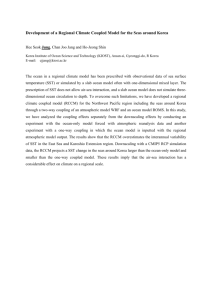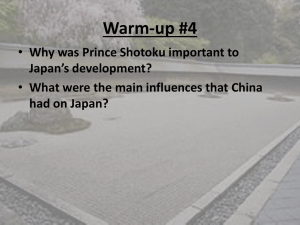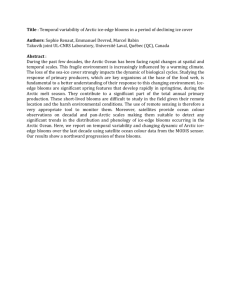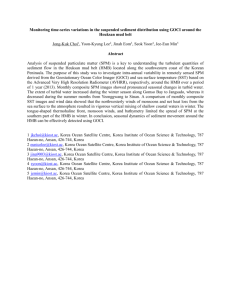10459_Kim-ed MLW
advertisement
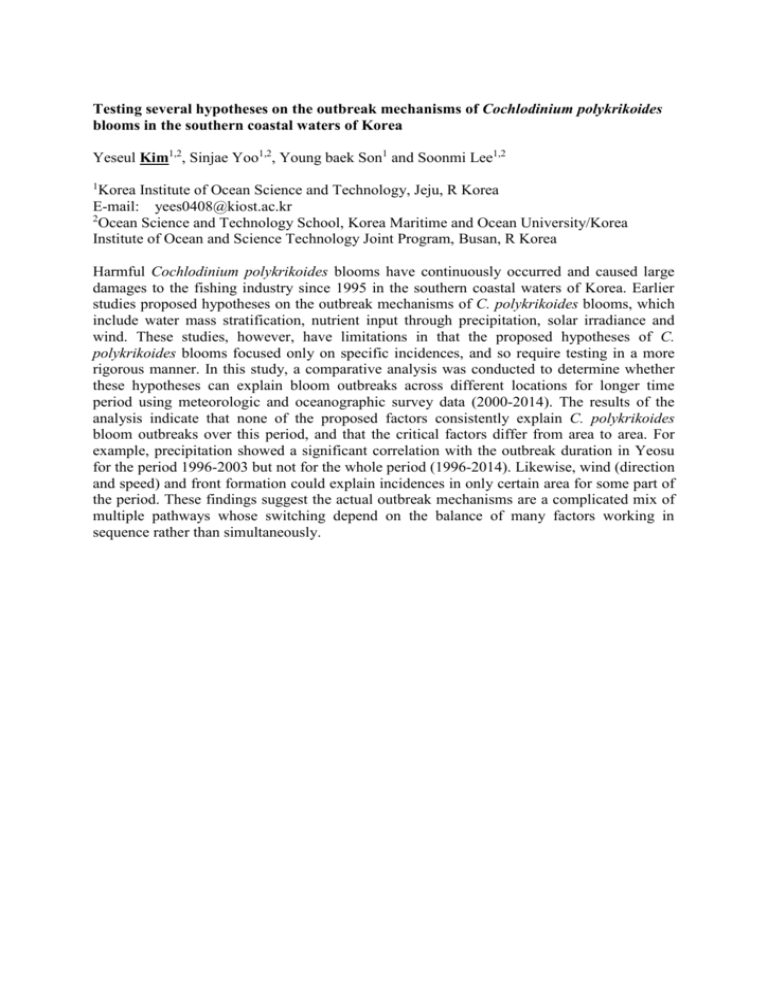
Testing several hypotheses on the outbreak mechanisms of Cochlodinium polykrikoides blooms in the southern coastal waters of Korea Yeseul Kim1,2, Sinjae Yoo1,2, Young baek Son1 and Soonmi Lee1,2 1 Korea Institute of Ocean Science and Technology, Jeju, R Korea E-mail: yees0408@kiost.ac.kr 2 Ocean Science and Technology School, Korea Maritime and Ocean University/Korea Institute of Ocean and Science Technology Joint Program, Busan, R Korea Harmful Cochlodinium polykrikoides blooms have continuously occurred and caused large damages to the fishing industry since 1995 in the southern coastal waters of Korea. Earlier studies proposed hypotheses on the outbreak mechanisms of C. polykrikoides blooms, which include water mass stratification, nutrient input through precipitation, solar irradiance and wind. These studies, however, have limitations in that the proposed hypotheses of C. polykrikoides blooms focused only on specific incidences, and so require testing in a more rigorous manner. In this study, a comparative analysis was conducted to determine whether these hypotheses can explain bloom outbreaks across different locations for longer time period using meteorologic and oceanographic survey data (2000-2014). The results of the analysis indicate that none of the proposed factors consistently explain C. polykrikoides bloom outbreaks over this period, and that the critical factors differ from area to area. For example, precipitation showed a significant correlation with the outbreak duration in Yeosu for the period 1996-2003 but not for the whole period (1996-2014). Likewise, wind (direction and speed) and front formation could explain incidences in only certain area for some part of the period. These findings suggest the actual outbreak mechanisms are a complicated mix of multiple pathways whose switching depend on the balance of many factors working in sequence rather than simultaneously.




